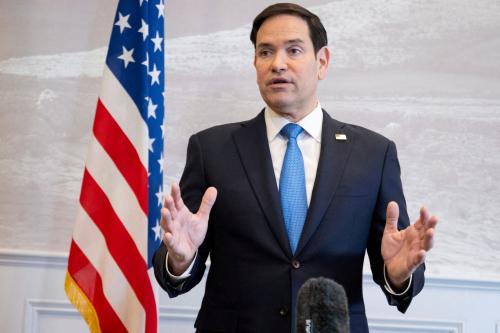Businesses, citizens, and law enforcement officials are discovering innovative new uses for drones every day. Drones have a distinctively menacing reputation because TV footage typically depicts them flying over a faraway battlefield launching missiles. In the popular imagination, drones have replaced the black helicopters of the 1990s and the satellite images of the 2000s as the primary surveillance tool. For this reason many perceive the drone as a threat to civil rights and safety in the United States. Privacy advocates have called upon lawmakers to pass legislation that keeps drones out of American skies. Others see a potentially beneficial role from drones if effective regulations are developed. In a recent paper titled Drones and Aerial Surveillance: Considerations For Legislators, Gregory McNeal proposes a model for how Congress should regulate drones.
McNeal’s Policy Recommendations
Privacy advocates have argued that law enforcement officers should secure a warrant before ever using a drone for surveillance. McNeal contends that the best standard relies on an interpretation of property rights law with a few supplementary criteria:
- Property Rights: As mentioned above, landowners should be allowed to deny aircraft access to a column of airspace extending from their property for up to 350ft.
- Duration-Based Surveillance: Law enforcement officials should only be able to survey an individual using a drone for a specific amount of time.
- Data Retention: Data collected from a drone on a surveillance flight should only be accessible to law enforcement officials for a period of time. The data would eventually be deleted when there is no longer a level of suspicion associated with the monitored individual.
- Transparency: Government agencies should be required to regularly publish information about the use of aerial surveillance equipment.
Expectation of Privacy
The crucial factors in determining whether the 4th Amendment prohibits drone monitoring has to do with the surveyed individuals’ expectation of privacy. In California vs. Ciraolo a police officer received a tip that a man was growing marijuana in a walled off part of his yard not visible from the street. The officer obtained a private aircraft and flew at an altitude of 1,000 feet in order to survey the walled off space. The Supreme Court ultimately ruled this type of “naked-eye” surveillance was not unlawful because it was within what the Federal Aviation Administration (FAA) calls a publicly navigable airspace. The officer had the right to view the walled off portion of the yard because it could be viewed in public airspace.
McNeal cites the expectation of privacy as a central point of his argument against the advocates who don’t want any drones in the air. He asserts that his approach actually offers more protections for privacy as opposed to a warrant requirement approach. He argues that it is not reasonable to expect privacy in a public place. For example there is no functional difference between a police officer monitoring a public protest and a drone monitoring one. McNeal wisely argues that it is possible to live in a world where a person’s privacy is respected and drones can be utilized to help create a safer society.
Matt Mariano contributed to this post.
The Brookings Institution is committed to quality, independence, and impact.
We are supported by a diverse array of funders. In line with our values and policies, each Brookings publication represents the sole views of its author(s).


Commentary
Drones and Aerial Surveillance: The Opportunities and The Risks
November 18, 2014